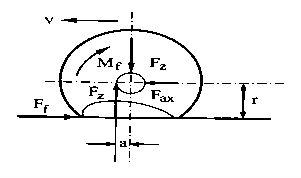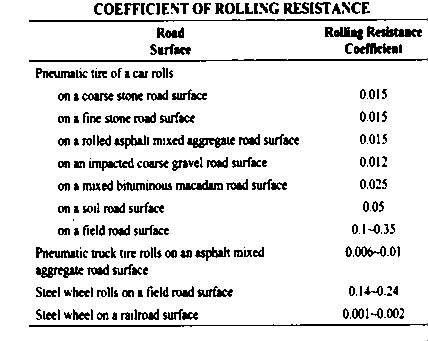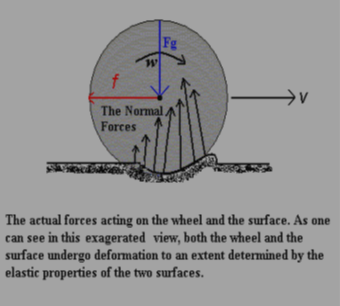SKEDSOFT
↵
Introduction:
Rolling resistance or rolling friction or rolling drag, is the force resisting the motion when a body (such as a ball, tire, or wheel) rolls on a surface.
Basics of rolling resistance:

- due to the deformation of the tire at the tire/road interface
- tire deformation consumes energy
- an unequal force is needed during compression and elastic recovery
- Therefore: the normal pressure distribution over the tire/road contact patch is not uniform.
- the normal force is higher in the leading half of the contact patch than in the trailing half
- the normal force produces a moment about the axis of rotation of the tire
- rolling resistance moment: Mf= Fz.a
- The driving force fax, applied to the wheel produces a moment to balance the rolling resistance moment.

- In the actual case of a rolling wheel, both the wheel and the surface will undergo deformations due to their particular elastic characteristics.
- At the contact points, the wheel flattens out while a small trench is formed in the surface
- Experiments show: rolling resistance is:
- proportional to the tire deformation
- Inversely proportional to the radius of the loaded tire.
ACCORDING TO THE US STANDARD:
- -IF v<50 km/h : f = 0,0165
- -IF v>50 km/h : f = 0,0165 [1 00,1.(v –50)]

